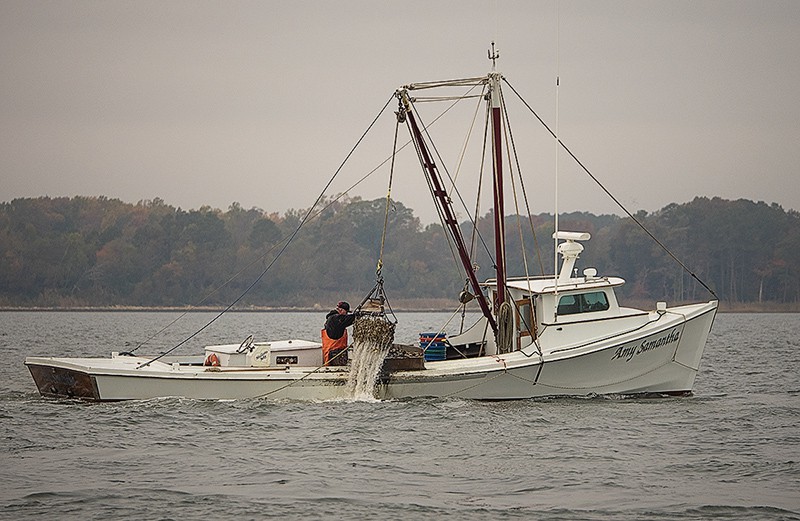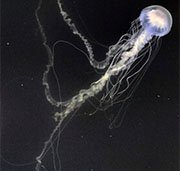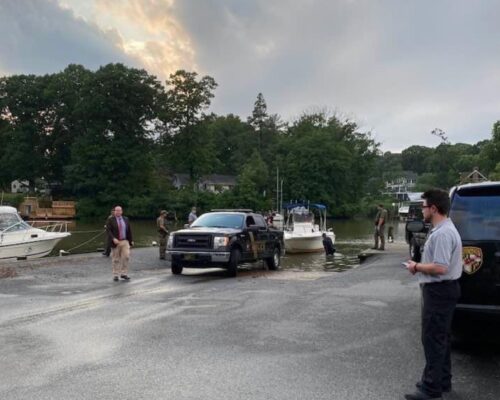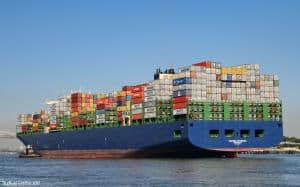By Jeremy Cox, Bay Journal News Service
Virginia is preparing to tighten limits on harvesting oysters this fall as the Chesapeake Bay fishery continues to suffer the effects of heavy rainfall across the watershed since last year.
Last season’s oyster harvest in Virginia was the smallest since 2013, according to preliminary survey results gathered by the Virginia Marine Resources Commission. This season, which gets underway in October, probably won’t be any better, fishery managers say.
“Generally,” said Andrew Button, who oversees the state agency’s conservation efforts, “it’s a more resource-conservative season.”
Translation: The state will look for ways to protect its oyster stock by shortening the amount of time that watermen can harvest oysters each day and limiting the types of gear they can use.
The Virginia Shellfish Management Advisory Committee, which makes recommendations to the commission, suggested Aug. 21 a series of regulatory changes for the upcoming October–May oyster season. The VRMC is expected to finalize the rules at a meeting scheduled for Aug. 27.
The measures are complicated, but their aim is simple: to prevent making things worse for the state’s oysters.
Persistent rains in the summer and fall last year upended the estuarine balance of the Chesapeake Bay and the tidal parts of the region’s rivers by delivering a large influx of freshwater. Button said if a place was normally extremely salty, it became somewhat salty; if it was somewhat salty to begin with, it turned into freshwater.
Anyone who has ever gulped down an oyster on the half-shell knows that the mollusks like some salt in their environment. Without it, they stop growing or die off.
That’s exactly what happened in the upper reaches of some rivers, Button said. For instance, low salinity led to a die-off of up to 95% of small and market-size oysters in the James River’s Upper and Lower Deep Water Shoals, the waterway’s two uppermost oyster beds, according to the Virginia Institute of Marine Science.
High water temperatures and low dissolved oxygen levels also gouged the population’s health.
A decline in oysters not only would raise prices on restaurant menus but also harm the health of the Bay. The mollusks are renowned for their ability to filter water — a feat that can be seen in any one of many time-lapse videos of oysters clearing up water in a dirty aquarium.
If the advisory committee’s recommendations are approved, the season will still begin on Oct. 1. But no mechanized dredging will be allowed until November to give smaller oysters a better chance of growing to the 3-inch market size, Button said.
“A lot of these oysters didn’t get the spring growth we like to see to get up to market size,” he said.
Dredges and hand scrapes, though the most efficient means of harvesting oysters, scour the surface of oyster reefs. Those reefs recover more slowly than those harvested using less-invasive gear, such as hand or patent tongs, said Wayne France, a waterman who chairs the shellfish advisory panel.
“It’s our job to optimize areas, not to maximize them,” he said.
The committee also recommended that dredge boats stop working by noon on two out of the four months when they’re allowed on the water. Last year’s rules allowed them to continue until 2 p.m.
Oyster farming, which accounts for the majority of the harvest in Virginia, is unaffected by the pending restrictions. But its output also has suffered from the same water conditions affecting the public fishery.
Maryland hasn’t taken any action yet on the upcoming oyster season, but its bivalves are in a similar mire. Maryland’s portion of the Bay is farther from the ocean than Virginia’s, so its oysters generally have been even more affected by the plunge in salinity, officials say. The state’s Department of Natural Resources is weighing a variety of new restrictions on oystering, including reductions in the daily harvest limits and shortening the season, which in Maryland has traditionally run from Oct. 1 through March 31.
DNR officials also have suggested they might close some areas to wild harvest for the coming season if available data indicates oysters are unusually scarce there or the areas were being heavily overharvested.
Restoration efforts, strong reproduction numbers and a burgeoning of the oyster-farming sector have recently pushed Virginia’s oyster harvest to heights not seen in several decades. After reaching a high of 635,000 bushels in 2015-16, though, there have been ups and downs.
Last year, the catch cratered to a little more than 457,000 bushels, Button’s surveys show. But he cautioned that the number could rise because of a lag in receiving paper reports from watermen and a delay in processing information caused by the VRMC’s recent relocation to Fort Monroe.
Even so, with oysters still reeling from the surge of freshwater, the region’s seafood industry is preparing for another gloomy year.
“We’re not going to have as many market oysters this year,” said Tommy Kellum of W.E. Kellum Seafood in Weems. “It’s a Mother Nature event. It’s not like an occurrence we could have prevented or managed for.”




